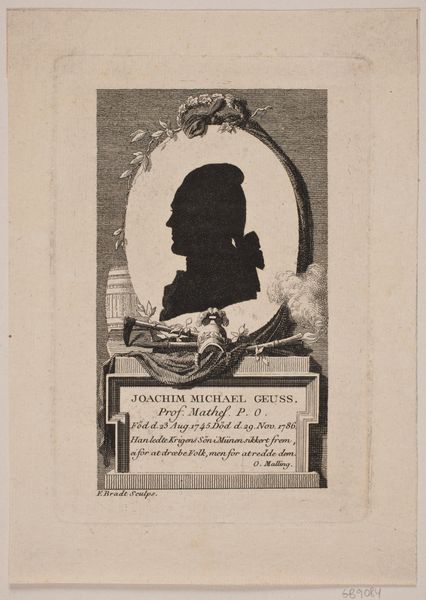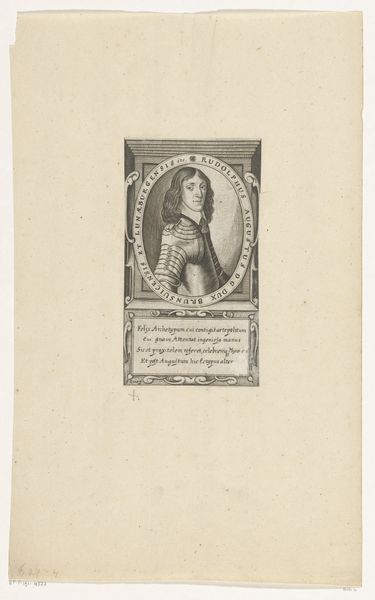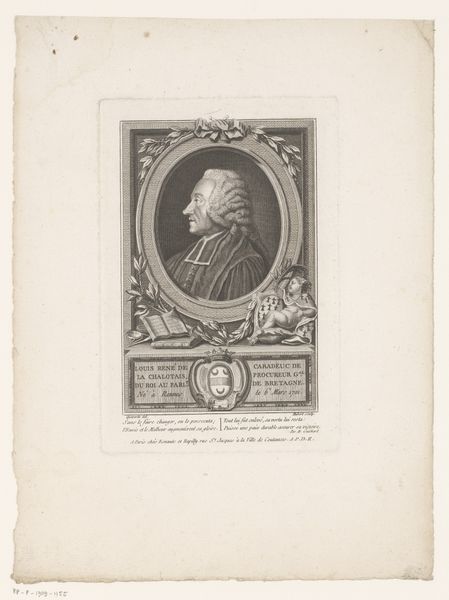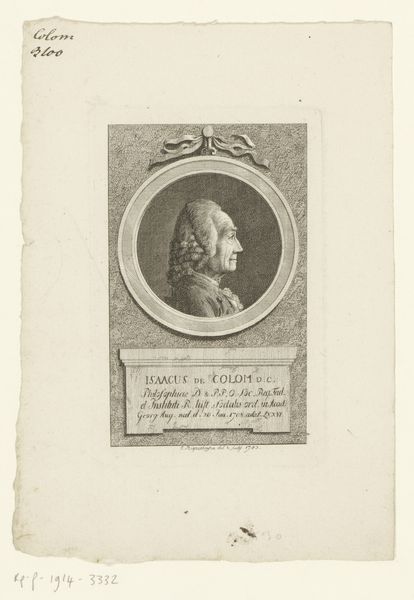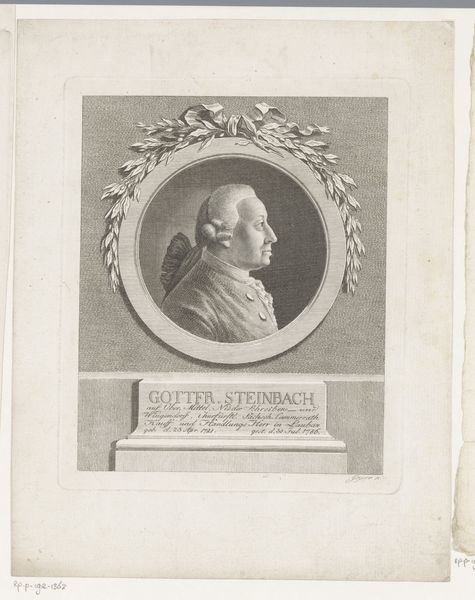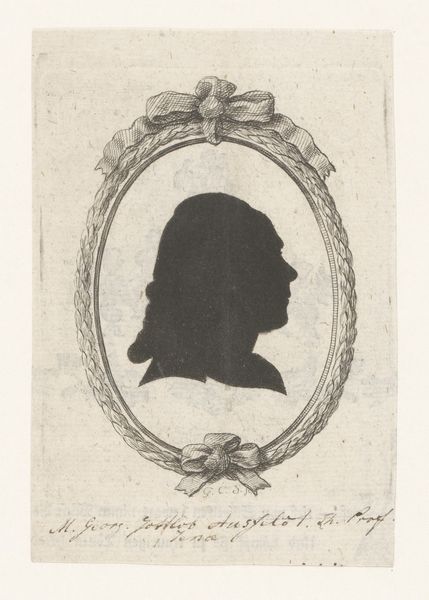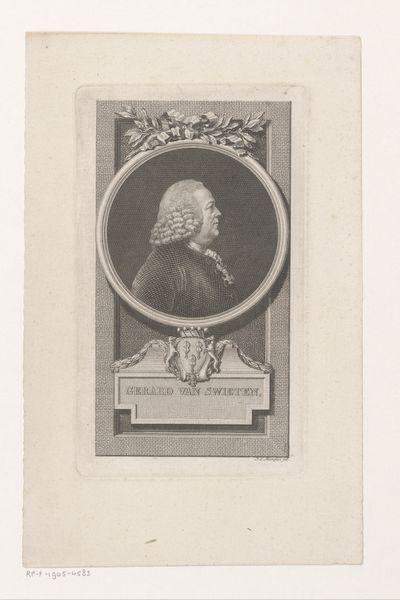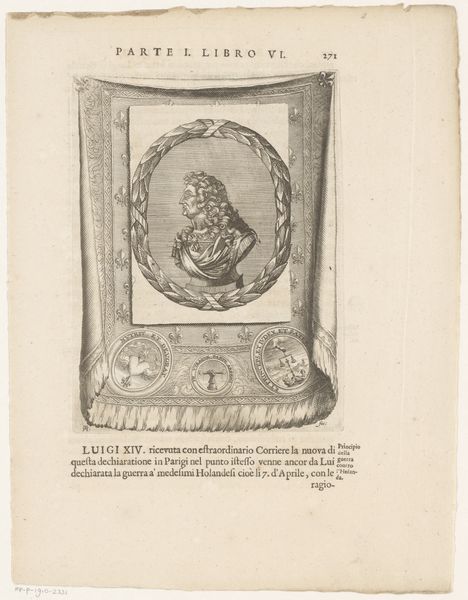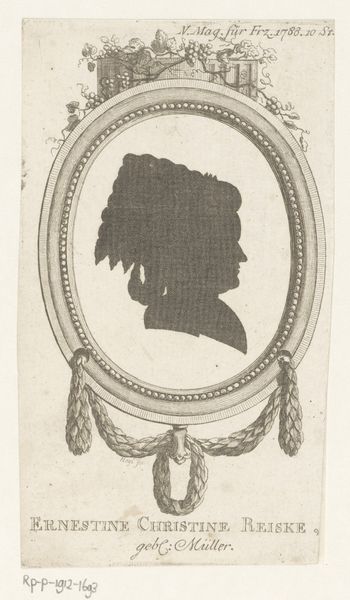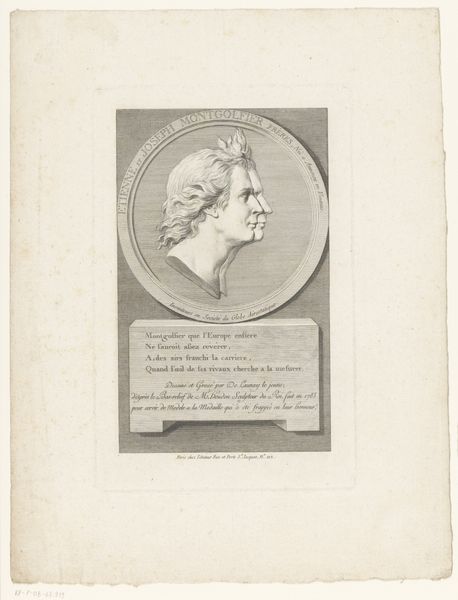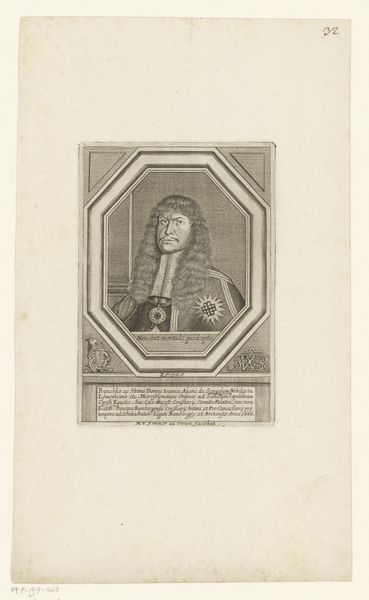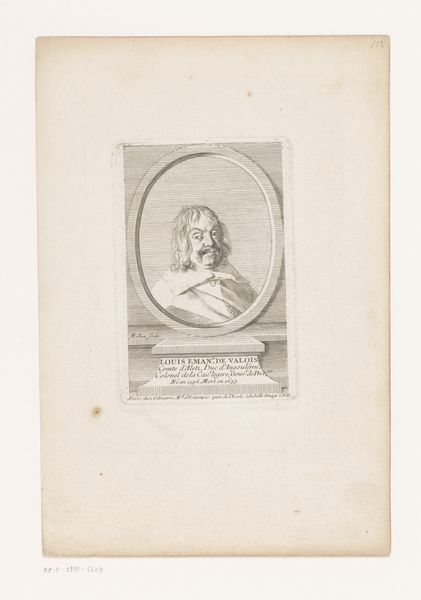
print, engraving
#
portrait
#
neoclacissism
# print
#
history-painting
#
engraving
Dimensions: height 187 mm, width 122 mm
Copyright: Rijks Museum: Open Domain
Johann Christian Benjamin Gottschick made this silhouette of Gottlieb Eusebius Traugott Melzer using etching. Silhouettes like these were popular in the late 18th and early 19th centuries, offering a relatively inexpensive way to capture a person's likeness. This print, made in Germany, presents us with a visual code of social status. Melzer's silhouette is framed, and positioned above a plinth decorated with books, a symbol of learning. The Latin inscription details Melzer's credentials: born in 1740, poet laureate of the University of Wittenberg, preacher, and a member of learned societies. This is a very public display of Melzer's social position within the institutional structures of church and academia. It’s a testament to the increasing importance of education and intellectual achievement in defining social status in the late 1700s. Understanding the symbolism and cultural context of images like this relies on thorough historical research, including looking into period literature, social histories, and institutional records. The true meaning of the artwork is really dependent on the social and institutional context.
Comments
No comments
Be the first to comment and join the conversation on the ultimate creative platform.
